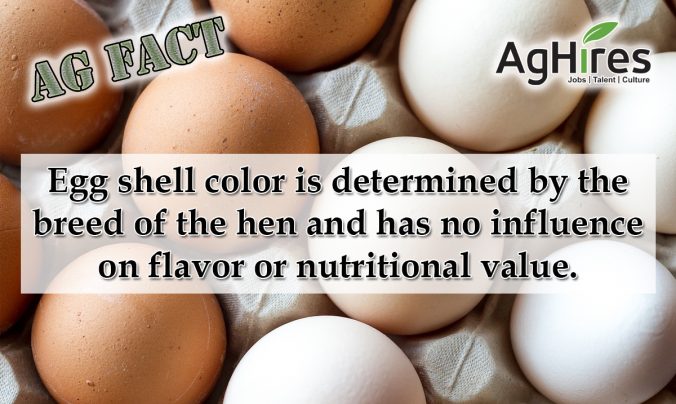
- Egg shell color is determined by the breed of the hen.
- Since breeds that lay brown eggs are typically larger birds, they require more food, which explains the cost difference.
- The shell and yolk color has no influence on egg quality, flavor, nutritional value, cooking characteristics or shell thickness.
- Egg production in the U.S. has significantly decreased its environmental footprint over the past 50 years. Even with more eggs being produced, the total environmental footprint was down 54% – 63% in 2010 compared to 1960.
- High-quality, nutritionally balanced meals are provided for the hens, consisting of corn, soybean meal, vitamins and minerals.
- Some farms still gather eggs by hand, but most of today’s farms use automated gathering belts.
- After being collected, the eggs are washed and sanitized.
- Since egg shells are translucent enough, a process called “candling” (holding the egg up to a light source) is done to inspect the interior for quality.
- An egg shell can have up to 17,000 pores on its surface.
- After being check for quality, eggs are sorted by size and placed in cartons, large-end up.
- Once packed in refrigerated trucks, they are shipped to local stores within a week of being laid.
- Eggs will age more quickly in one day at room temperature than in one week in the refrigerator, so they must be refrigerated.
- Cage-free eggs are being produced more. In 2017, close to 16% of all hens were in cage-free production, which is up from 12% in 2016 and 4% in 2010.
- Nearly 60% of eggs produced in the U.S. are used by consumers, and only 9% are used by the food service industry.
- The average American consumes about 267 eggs per year.
- In 2016, the U.S. table egg production totaled 88.4 billion.
- There are about 319 million commercial laying hens in the U.S.
- On average, each laying hen produces 289 eggs per year.
- Iowa is the top producing state followed by Indiana, Ohio, Pennsylvania, Texas, Michigan, California, Minnesota, Georgia, and Nebraska.
- China is the largest egg producer in the world, producing about 160 billion eggs per year.
Want more Agriculture Facts? Click here
Follow us on Facebook and Twitter to get your weekly dose of Ag Facts.
Sources:
Incredible Egg
FarmFlavor.com
United Egg.com
Click here to learn some egg-citing egg facts!






